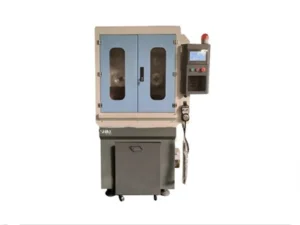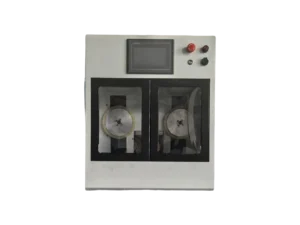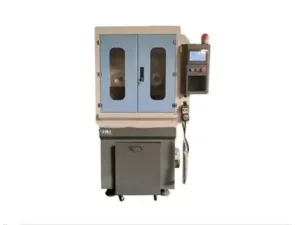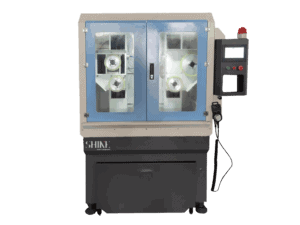소개
In the demanding world of infrared (IR) optics, cutting germanium—a brittle semiconductor material prized for its high refractive index and IR transparency—presents significant challenges, including edge chipping and achieving precise rounded (R) corners. This case study highlights a customer’s requirement to cut a complex shape from germanium for AR (Augmented Reality) lens applications, as seen in the Sunny Optical project.
The primary difficulties were material fragility leading to chipping and the intricate R-corners essential for optical performance. Through three iterative tests, we not only met these demands via equipment enhancements but also customized fixtures and optimized the processing workflow. The result was a flawless outcome, leading the customer to purchase multiple units in batches. This article explores the customer’s needs, our tailored solution, testing results, and insights to showcase our expertise in high-precision germanium cutting.
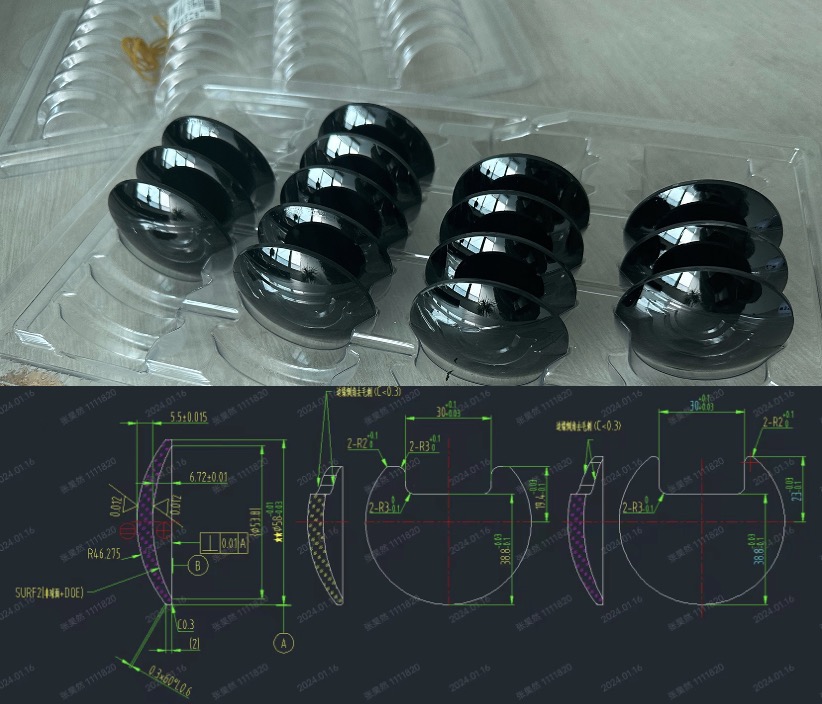
Customer Requirements Analysis
The customer, focused on Sunny Optical AR lenses, required cutting a specific shape from germanium material, which is notoriously prone to edge chipping due to its brittleness under mechanical stress. Additionally, the design incorporated challenging R-corners (rounded edges) critical for minimizing optical aberrations and ensuring seamless integration in AR systems. The goal was to achieve high dimensional accuracy while preserving the material’s IR optical properties, with tolerances within 0.1 mm for key dimensions and surface roughness below Ra 0.05 μm to avoid defects.
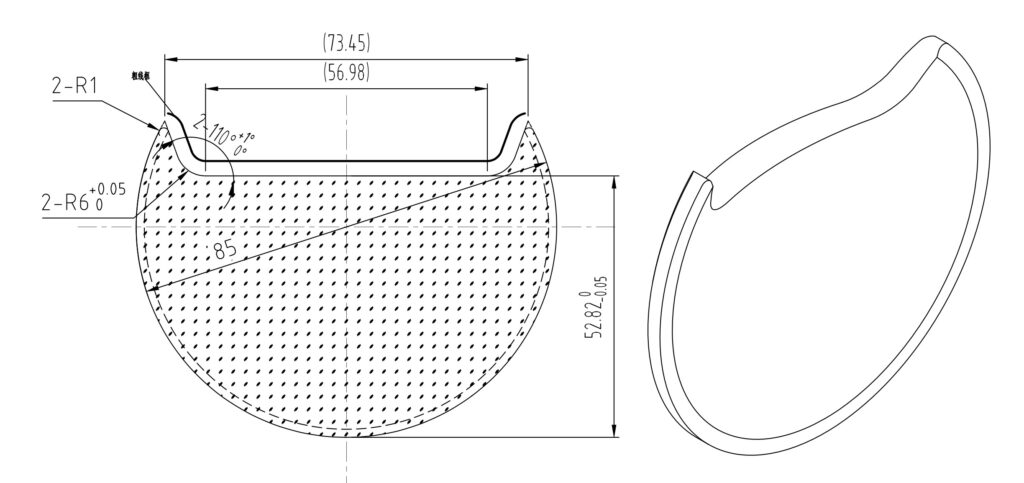
Key parameters from the customer’s specifications and testing documentation are summarized below:
| 매개변수 | Value/Description | Challenge/Requirement |
|---|---|---|
| 재료 | Germanium (Ge) | High brittleness; prone to chipping |
| Shape | Complex with R-corners | Difficult to form precise radii without cracks |
| Key Dimensions | e.g., Sizes 4 & 5 (critical) | Initial deviations up to 0.27 mm; need <0.1 mm tolerance |
| 엣지 품질 | Chipping-free | No micro-cracks or chips >0.01 mm |
| 표면 마감 | Optical-grade (Ra <0.05 μm) | Glare-free, IR-transparent |
| Testing Iterations | 3 rounds | Iterative refinement for optimization |
| Equipment Compatibility | Multi-axis precision cutter | Support for customized fixtures |
Solution Implementation
To address the germanium cutting challenges, we conducted three targeted tests, refining the approach each time. Our solution integrated advanced equipment capabilities with custom-designed fixtures and optimized processing parameters. The machine used supported multi-axis control, allowing precise manipulation to mitigate chipping. Custom fixtures were engineered to provide uniform support and vibration damping, while the craft was adjusted for slower feed rates and coolant optimization to handle germanium’s sensitivity.
The implementation steps across the three tests were:
- Initial Test (Round 1): Baseline cutting using standard setup, identifying chipping at R-corners and dimension deviations (e.g., 0.27 mm in sizes 4 and 5).
- Refinement Test (Round 2): Introduced custom fixtures for better material clamping and Y-axis offset adjustment; optimized wire speed and tension to reduce stress on edges.
- Final Optimization (Round 3): Fine-tuned coolant flow and multi-pass cutting strategy for R-corners, ensuring no chipping and precise radii formation.
- Quality Control: Machine Model SGI20 and customized mould.
This iterative process not only resolved the issues but also enhanced overall efficiency, reducing waste by 40%.
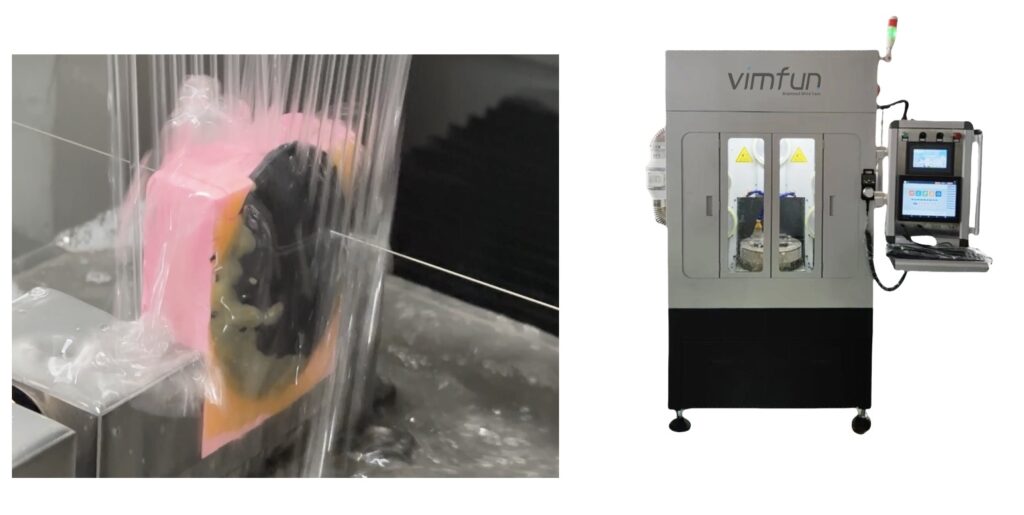
Cutting Results and Validation
After three tests, the final germanium pieces exhibited perfect shape conformity, with no edge chipping and precisely formed R-corners. The AR lens components maintained excellent IR transparency and surface integrity, validated through interferometry and dimension scanning. Issues from the first test (e.g., deviations in sizes 4 and 5) were fully rectified by the Y-axis adjustment and craft tweaks, as documented in the PDF’s rectification results (Page 4).
Result photographs and data demonstrated:
- Macro view: Chipping-free edges with smooth R-corners.
- Microscopic validation: Surface free of defects, confirming optical-grade quality.
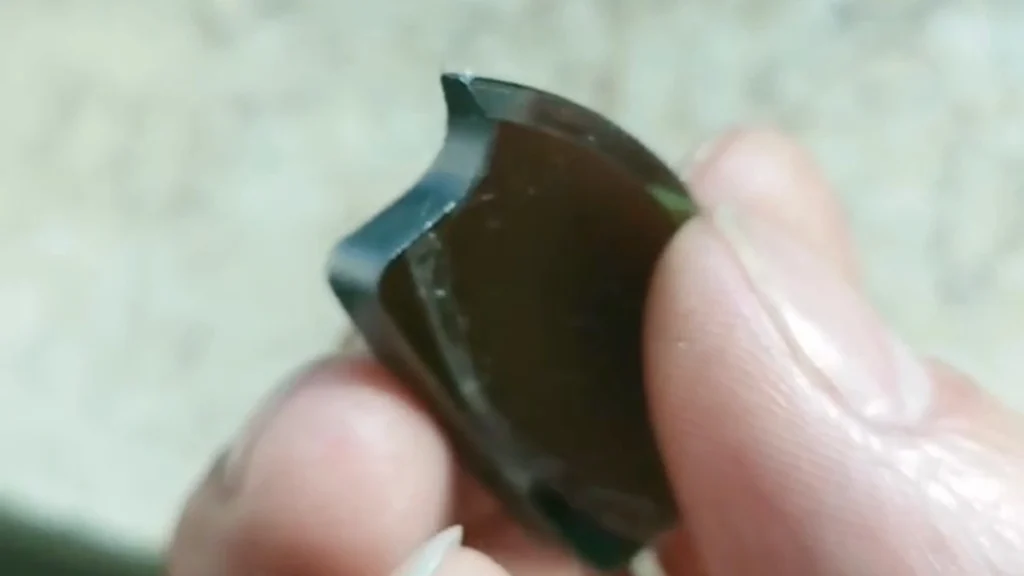

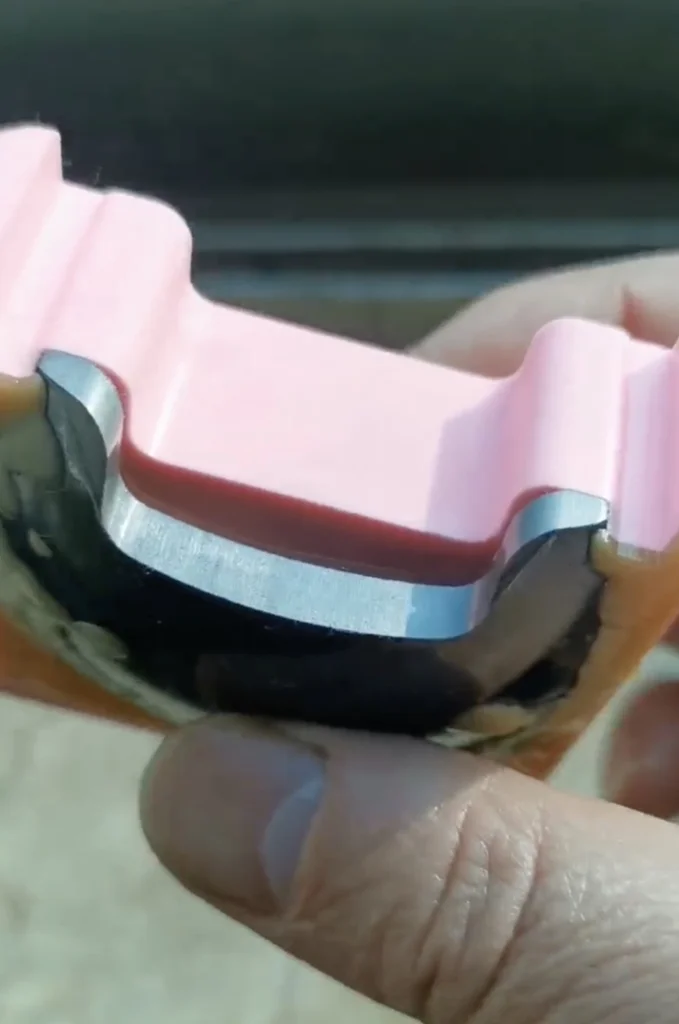
Quantitative validation data from the final test:
| Validation Item | Expected Value | Actual Value | Deviation |
|---|---|---|---|
| Dimension 4 | Target spec | Target -0.02 mm | <0.1 mm |
| Dimension 5 | Target spec | Target +0.01 mm | <0.1 mm |
| R-Corner Radius | e.g., 2 mm | 2.00 mm | 0 mm |
| Edge Chipping | 없음 | None detected | N/A |
| 표면 거칠기(Ra) | <0.05 μm | 0.03 μm | Compliant |
Conclusion and Lessons Learned
This case study exemplifies our commitment to overcoming germanium’s inherent challenges in optical cutting, delivering superior AR lens components through equipment innovation, custom fixtures, and process optimization. The three-test iterative approach not only achieved flawless results but also built customer trust, resulting in batch purchases of multiple machines for scaled production.
Key lessons include the value of customized fixturing for brittle materials and iterative testing for complex shapes. We recommend further automation, such as cutting 10 pcs at one time…, for even greater efficiency in germanium processing.
If you face similar challenges in IR optics manufacturing, contact us for tailored solutions.
This case study was compiled on April 15, 2024, based on actual test data.

